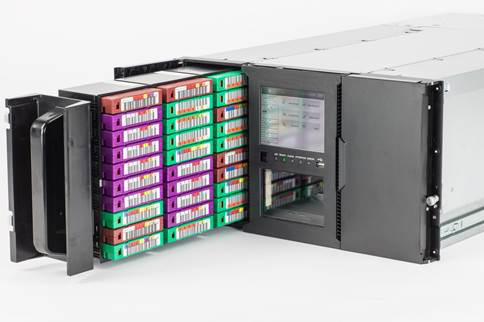
Last month, IHS Markit released a white paper titled Caught On Tape – Now Keep It Secure, which discusses the benefits and best practices of LTO technology in the Digital Video Surveillance (DVS) industry. The white paper draws your attention to three key market trends; a greater number of cameras shipped and used worldwide, higher video recording specifications and official requirements for data to be kept for longer.
But what does LTO tape and LTFS offer the video surveillance industry, which is facing demands for increased need for storage? When used in a multi-tiered storage solution, an LTO tape library can be implemented as a cost-effective, long-term, high-capacity storage tier. With LTO technology, users do not have to compromise on video quality or retention time, allowing organizations to manage their storage system and stay within their budgets.
Read the white paper, Caught On Tape, Now Keep It Secure, in its entirety here.
The Ever-Changing Digital Video Surveillance Landscape
The digital video surveillance industry has evolved dramatically over the last 50 years, DVS has now entered an era of network-based video surveillance and associated IT infrastructure. Research shows that there are three major factors driving change in the DVS industry.
The first factor is the sheer volume of cameras being shipped globally. In 2017, 98 million network surveillance cameras and nearly 29 million HD CCTV cameras will be shipped globally.
The second is the ever-increasing video resolution of these cameras. Currently the most common network camera shipping is 1080p resolution; however, there will be continued growth in shipments of higher resolution cameras, including 4K resolution video, which is four times the file size of 1080p.
Lastly, organizations are facing increasing regulations and requirements for video surveillance data. While the majority of recorded surveillance footage is never reviewed, data must be retained until it can be determined which parts are relevant or valuable.
How LTO Technology Can Help
With these factors in mind, an LTO tape library is a smart solution within a multi-tiered storage environment. End-users can manage their storage system and remain within budget as tape can provide a larger capacity storage tier and longer-term retention for the same cost. This allows every detailed piece of data to be stored until users can determine later what needs to be kept.
A multi-tiered storage environment works well with a large number of camera feeds which require extended storage retention at maximum quality. Typically in a multi-tiered solution, video data is transferred automatically between storage tiers based on pre-defined policies. The capacity of each tier is usually based on the likelihood of requiring the highest performance and frequent use. For example, the most recent footage may be kept on the highest performing disk tiers in the initial weeks post-recording when access is most likely to be required.
After this, it is moved to a tape tier where it is deemed unlikely to be required for review but still needs to be retained. Where events are required to be kept long-term or video evidence is used, a copy should be transferred to the tape tier and duplicated for offsite storage.
In systems with long-term data retention needs, users can make use of LTO technology in combination with disk, to effectively meet their requirements in a cost-effective way.
Source: lto.org
